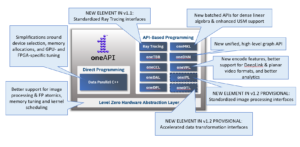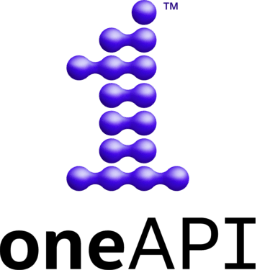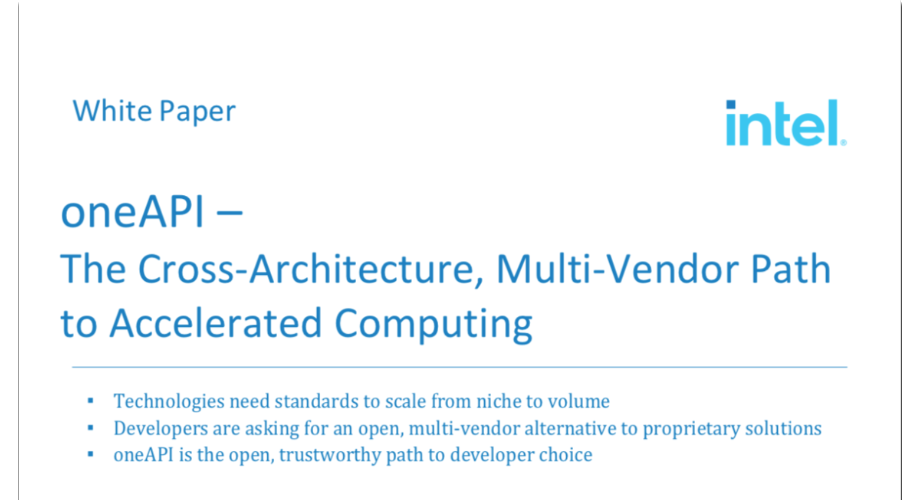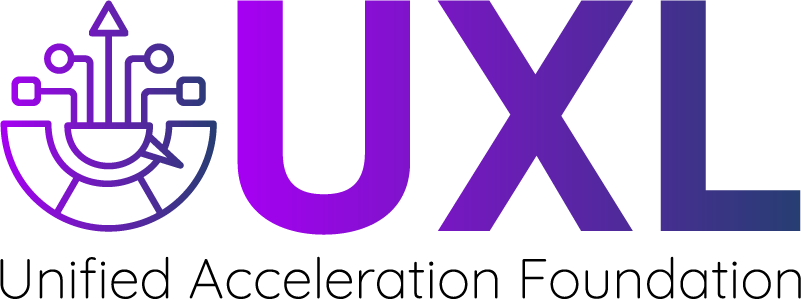Giving thanks for oneAPI progress

As I look back on this year, I’m amazed at how fast oneAPI has grown globally, reflective of the industry’s need for an open, standards-based programming model.
We recently added 11 new Centers of Excellence: leading academic institutions doing cutting edge science who have chosen oneAPI as their accelerator programming model of choice. New platform enabling continues to grow: the Chinese Academy of Sciences is extending oneAPI with support for indigenous Chinese hardware, while SiPearl is using oneAPI in their design for the first European Exascale processor. I’m especially proud to see oneAPI receive the 2021 HPCwire Readers’ Choice Award for best HPC programming tool or technology. This is in addition to the many national laboratories, supercomputer centers, and software partners who are advancing artificial intelligence and heterogeneous parallel computing using oneAPI today:

Announcing oneAPI specification 1.1!
The next evolution of the oneAPI specification: version 1.1 is now live on oneAPI.io. While the initial spec defined the foundational elements to drive heterogeneous compute, this new iteration builds on that base through new domain extensions that mirror the growing oneAPI adoption. v1.1 updates all elements of the specification with new APIs and adds a brand-new element: Ray Tracing, which was first introduced in the May update of the 1.1 provisional spec. The well-known, broadly used open-source APIs: Embree, OSPRay, Open Image Denoise and Open Volume Kernel Library, are now formally part of the oneAPI specification, indicative of the growing popularity of ray tracing compute across film, scientific visualization, design, and gaming. It allows developers to “write once” and deploy across multiple accelerators.
Provisional oneAPI Specification 1.2: New Functionality Coming!
I also want to give you a sneak peek into some exciting additions, currently part of our 1.2 provisional draft:

- oneDNN: this element adds a Graph API that unifies the graph interfaces for multiple hardware targets – CPU, GPU, and other accelerators. It integrates with deep learning frameworks and inference engines to maximize opportunities for performance tuning. A proof-of-concept implementation is available on Github.
- oneIPL: the image processing library (IPL) is a brand-new specification element that defines image processing functions across several domains: filers, geometry transformations, color and type conversions. Using these APIs, developers can take advantage of the diversity of computational device models: vectorization and SIMD (single instruction, multiple data) on CPU and GPU, CPU threading, GPU SIMT (single instruction, multiple threads). Check out the new API definitions at spec.oneAPI.io.
- oneDTL: the data transformation library (DTL) is another new spec element, specifically designed to standardize data compression functions. It most recently added an API for lossy compression of floating-point data based on the ZFP algorithm. Check out the new API definitions at spec.oneAPI.io.
The oneAPI specification continues to gain steady momentum as partners adopt SYCL and oneAPI elements on multiple hardware platforms. I’m excited to watch as projects started today – led by the scientific, AI, and HPC communities – yield results in the upcoming years. In the spirit of the Thanksgiving holiday, here in the United States, I want to express my gratitude for your continuous collaboration in driving this industry work forward!
About oneAPI
oneAPI is an open, unified and cross-architecture programming model for CPUs and accelerator architectures. Standards-based oneAPI simplifies software development, enables legacy code integration, and delivers uncompromised performance for accelerated compute without proprietary lock-in. With oneAPI, developers can choose the best architecture for their solution without needing to rewrite software for the next architecture and platform.


